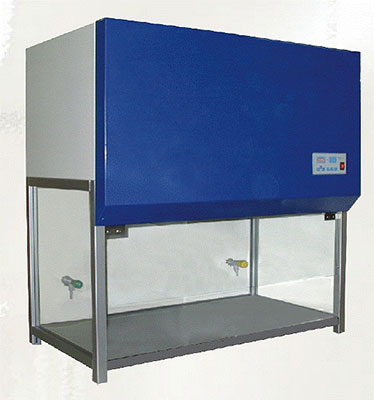Home Improvement
Biological Investigations Using a Laminar Air Flow Hood
A laminar airflow hood is a central ice of equipment in any biological or microbiological laboratory. It provides an aseptic environment that can be used for both research and postgraduate teaching. A steady flow of ultra clean air keeps the workspace free from contamination.
Laminar airflow hoods are cabinets that include a number of air blowers. These pass air through high efficiency particular air (HEPA) filters that remove all dust particles large than three microns. The resultant air is free from any fungal contaminants or bacteria and flows usually at a velocity of around 27 metres per minute across the working area. The air current has to be steady and without any turbulence so that air from the outside cannot enter the hood and contaminate the working space.
Horizontal flow
The laminar airflow may be in a horizontal or vertical direction. It is always advisable to use horizontal flow hoods for research on plant tissue cultures. The filtered air blow horizontally towards the laboratory operator and provides the best protection from contamination for the cultures. But horizontal flow should not be used for work on bacteria, fungi, or hazardous organisms.
Vertical flow
Vertical laminar flow hoods are used for clinical and microbiological work. The air flows vertically from the top of the hood down to the workspace and the laboratory operator. The level of containment for such an airflow hood can be increased in a number of degrees to create biological safety cabinets. These can be used for work on hazardous organisms as any aerosols that may be generated during the investigations and experiments are filtered by a second HEPA filter before they are released through a dedicated exhaust duct and outside the building.
Working procedures
Surfaces within the hood may be further sterilised by switching on short wave ultraviolet light fluorescent tubes for a few minutes. The tubes are installed within the hood but the regulating switch is outside it. Before starting work, laboratory operators should wash hands thoroughly and scrub with a suitable disinfectant. Sterile gloves may be worn during investigations but these may not always be an asset. Gloved hands may become contaminated just as easily as un-gloved ones.
Laboratory workers should conduct investigations in the centre of the hood. Article within the hood have to be arranged so that clean air does not wash over any dirty objects and later contaminate areas that should remain sterile. The operator must stand at least six inches from the front end of the hood to avoid creating a back-flow of air into the hood. The HEPA filter should be checked regularly to ensure it is not blocked. Any slowdown in the airflow speed is a sure sign of filter blockage and that the filter should be changed.
Conclusion
Laminar flow hoods maintain a laboratory working area free from particulates and microbial contaminants. They provide air flow in a vertical or horizontal direction depending on the nature of investigations to be undertaken. But the hood itself is not a method of sterilizing the working area. This can be achieved by shining ultraviolet light on the space.
AUTHOR BIO
Tom Brown writes extensively on laboratory management for a wide range of websites and blogs covering the biological sciences. For more information on laminar flow visit the website http://www.containedairsolutions.co.uk.
-

 Tech11 years ago
Tech11 years agoCreating An e-Commerce Website
-

 Tech11 years ago
Tech11 years agoDesign Template Guidelines For Mobile Apps
-

 Business6 years ago
Business6 years agoWhat Is AdsSupply? A Comprehensive Review
-

 Business10 years ago
Business10 years agoThe Key Types Of Brochure Printing Services
-

 Tech8 years ago
Tech8 years agoWhen To Send Your Bulk Messages?
-

 Tech5 years ago
Tech5 years ago5 Link Building Strategies You Can Apply For Local SEO
-

 Law5 years ago
Law5 years agoHow Can A Divorce Lawyer Help You Get Through Divorce?
-

 Home Improvement6 years ago
Home Improvement6 years agoHоw tо Kеер Antѕ Out оf Yоur Kitсhеn
































